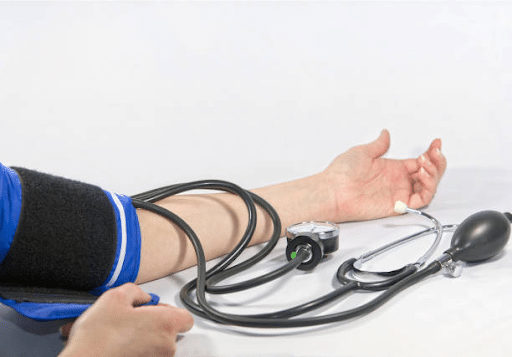Symptoms of Costochondritis: A Comprehensive Guide

Costochondritis, though not a condition widely discussed, can cause significant discomfort and confusion for many individuals. It is a disorder that affects the cartilage where the ribs attach to the breastbone, an area known as the costal cartilage. Identifying costochondritis symptoms is essential, as they can sometimes mimic other conditions, causing distress and uncertainty. However, understanding its signs and symptoms is crucial for managing the condition effectively.
Recognising the Common Symptoms
One of the most prominent and recognisable symptoms of costochondritis is chest pain. This pain tends to occur in the front of the chest, particularly where the ribs meet the breastbone. Unlike pain caused by heart-related issues, which often radiates to other parts of the body, costochondritis pain is typically localised and sharp, often exacerbated by movement or pressure. Many individuals report that the pain intensifies when they engage in activities like coughing, deep breathing, or even when the area is touched.
The sensation of discomfort can vary from a mild ache to a severe, stabbing pain, and it can fluctuate throughout the day, often worsening with physical exertion. This variability can make it difficult for individuals to pinpoint the exact cause, as it may come and go without clear triggers. This is why many people are initially puzzled by the symptoms, especially when no other signs of a more serious condition, such as a heart attack, are present.
Another noteworthy symptom of costochondritis is tenderness in the chest area. When pressure is applied to the affected cartilage, it often results in a sore or tender sensation. This tenderness is typically concentrated on the costal cartilage, which is located on either side of the sternum. In some cases, the discomfort can even extend to the upper ribs or the back, further complicating the diagnosis.
Individuals with costochondritis may also experience pain that radiates to the arms, shoulders, or neck. This can be particularly distressing because it can resemble the pain often associated with heart conditions. However, unlike heart-related pain, the discomfort from costochondritis does not usually involve other symptoms like sweating, nausea, or dizziness, which are commonly seen in more severe health issues.
Factors That Exacerbate Symptoms
The symptoms of costochondritis can be aggravated by certain movements or activities. For instance, anything that requires a deep breath—like sneezing or yawning—can cause the pain to flare up. This is due to the stretching of the chest and ribs during these actions, which can put additional pressure on the inflamed cartilage. Similarly, lifting heavy objects, intense physical activity, or even a prolonged period of poor posture can lead to an increase in discomfort.
It’s also important to note that the symptoms of costochondritis may vary from one individual to another. For some, the pain is intermittent and mild, while for others, it can be a persistent and more intense discomfort. It can last anywhere from a few days to several weeks, and in some rare cases, it can become a chronic issue that recurs over time.
Understanding the Causes Behind the Pain
The underlying cause of costochondritis remains unclear in many cases. It is often classified as an idiopathic condition, meaning there is no obvious reason for its onset. However, it has been linked to physical trauma or overuse, such as after an injury to the chest or repetitive movements that strain the ribs. Some individuals who engage in activities that involve heavy lifting or strenuous upper body movements may be at a higher risk of developing the condition. Additionally, infections or conditions that lead to inflammation, such as arthritis, can also contribute to the development of costochondritis.
Though it is more commonly seen in individuals under the age of 40, the condition can affect people of all ages. It is also more prevalent among women than men, though the reasons for this discrepancy are still not entirely understood. Certain factors, such as a history of respiratory infections or even the presence of other autoimmune diseases, have been linked to an increased risk of developing this condition.
When to Seek Medical Attention
While costochondritis is typically benign and does not lead to any long-term health problems, there are situations where seeking medical attention is necessary. If the chest pain is severe or accompanied by other symptoms such as difficulty breathing, dizziness, or pain radiating to the jaw or arms, it is crucial to seek immediate medical care, as these could be signs of a more serious condition, such as a heart attack.
In most cases, a healthcare provider can diagnose costochondritis based on a physical examination and a review of the patient’s symptoms. X-rays or other imaging tests are typically not required unless the physician suspects another underlying condition.
Managing Costochondritis: Treatment and Relief
For most individuals, the symptoms of costochondritis can be managed effectively with a few simple strategies. Over-the-counter anti-inflammatory medications, such as ibuprofen, are often recommended to reduce inflammation and alleviate pain. Applying a hot or cold compress to the affected area may also provide relief. These treatments help reduce swelling and ease the discomfort associated with costochondritis.
In some cases, physical therapy may be recommended, particularly if the pain is related to posture or overuse. A trained therapist can provide exercises that stretch and strengthen the muscles surrounding the chest, which can alleviate tension on the costal cartilage. Gentle stretching, yoga, and relaxation techniques may also help reduce the frequency and intensity of the pain.
For individuals who experience chronic or severe costochondritis, more aggressive treatments may be required. Corticosteroid injections, for example, can provide longer-lasting relief by reducing inflammation in the affected area. In rare cases, if the condition persists despite other treatments, surgical intervention may be considered to remove the inflamed cartilage. However, this is typically a last resort, as most individuals find relief from non-invasive treatments.

The Positive Outlook: A Manageable Condition
Although costochondritis can be a cause of discomfort and distress, the good news is that it is usually a self-limiting condition. With proper care and management, most individuals experience significant improvement within a few weeks. For some, the pain may disappear altogether, while others may experience occasional flare-ups that are easily managed with rest and anti-inflammatory medication.
It’s also worth noting that costochondritis does not lead to any permanent damage to the chest or ribs. With a proper understanding of the symptoms and the right treatment plan, individuals can manage the condition effectively and continue to live their lives without prolonged discomfort.
In conclusion, while the symptoms of costochondritis may be alarming at first, they are generally manageable and often improve over time. By recognising the signs early on and seeking appropriate treatment, individuals can find relief and regain their quality of life. Whether through medication, physical therapy, or simply resting, there are several ways to address and alleviate the symptoms of this condition, offering a positive outlook for those who are affected by it.




